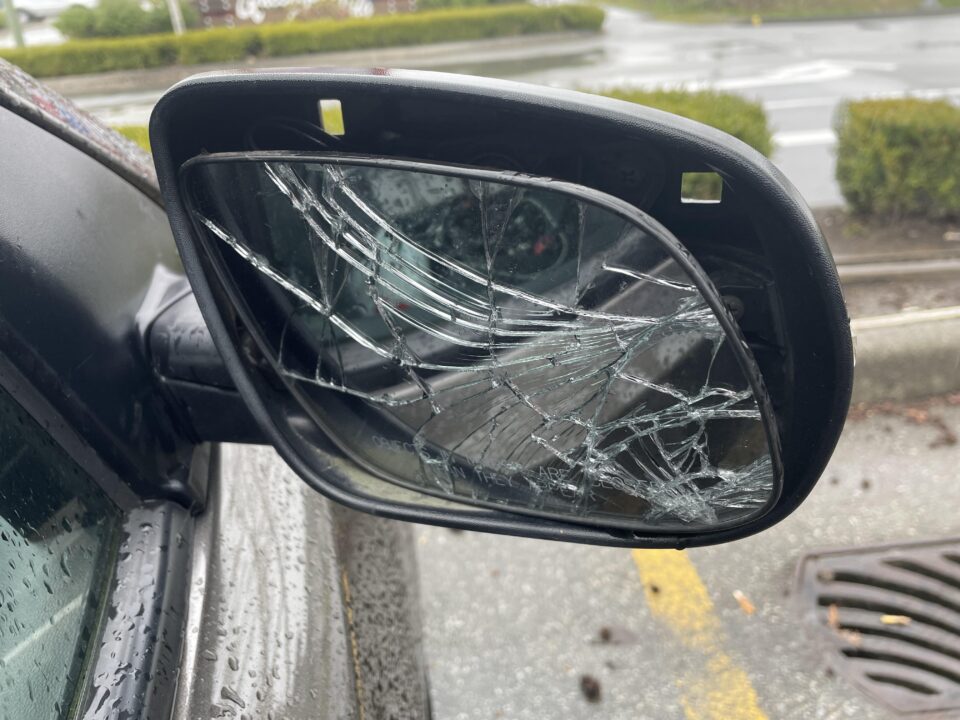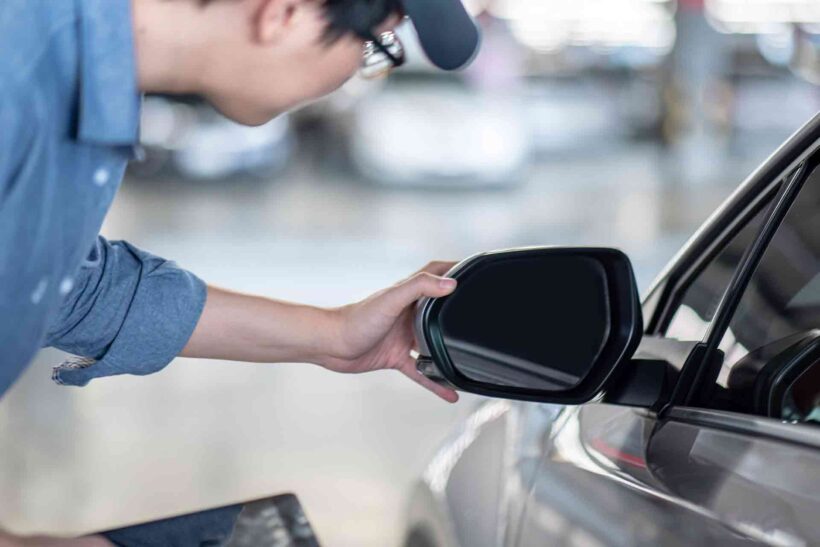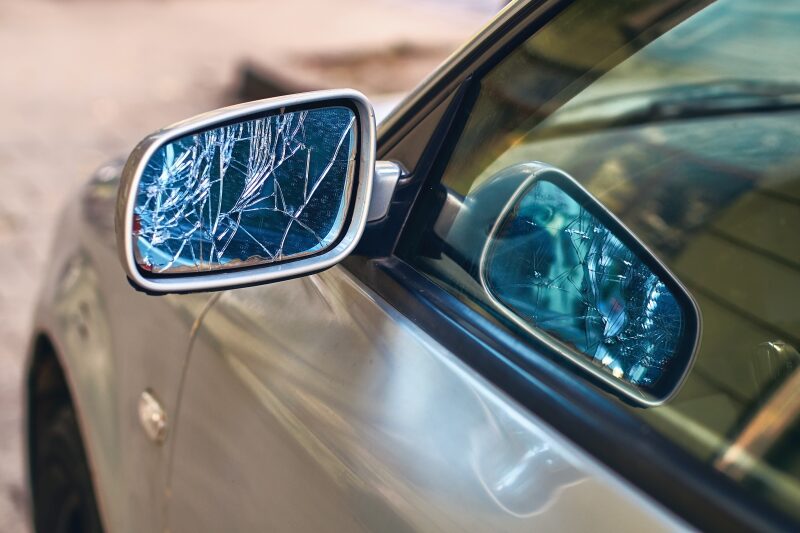The auto glass in your vehicle serves an important safety purpose, providing clear visibility while protecting occupants from weather elements and road debris. An integral component of auto glass is the rear view and side mirrors, which allow you to easily view cars, objects, and people behind and beside you while driving.
You essentially have two options when it comes to auto glass mirror repair – DIY methods or professional auto glass services. DIY repair is only recommended for small chips or surface scratches. Anything more severe should be handled by a professional auto glass technician who has the experience, tools, and materials to properly restore your mirrors. For auto glass mirror repair Omaha, reach out to us!
Common Causes of Auto Glass Mirror Damage
Auto glass mirrors can become damaged for a variety of reasons. Some of the most common causes of damage include:
Accidents
One of the most common ways auto glass mirrors get damaged is in accidents. Even minor fender benders can cause the mirror housing to break or the mirror itself to shatter or crack. More severe accidents that damage the doors or side panels have an even greater chance of causing damage to side view mirrors.
Vandalism
Unfortunately, vandalism is another common cause of broken auto glass mirrors. Thieves may break off side mirrors when attempting to break into a vehicle. Bored troublemakers may also target side mirrors for damage through kicking or striking them. This type of targeted vandalism can shatter or detach mirrors.
Wear and Tear
Over time, the materials that make up side view mirrors can deteriorate from exposure to the elements. Prolonged sun damage can cause the mirror housing to become brittle and prone to cracking. The mirror glass itself can also weaken and become more susceptible to damage with age. Vibration from driving can also loosen mirror attachments and cause cracking over time.
Assessing the Damage
When auto glass mirrors become damaged, it’s important to thoroughly assess the damage before determining whether a repair or replacement is needed. There are several key factors to evaluate:
Type of Damage
- Cracks – These are common and can sometimes be repaired depending on severity. Cracks radiate outward from the point of impact.
- Chips – Small rounded chips are repairable in most cases. Larger chips or ones with sharp edges often require replacement.
- Scratches – Light scratches can often be buffed out, but deep grooves usually necessitate replacement.
- Holes – Any hole in the mirror will require replacing the entire unit.
Location of Damage
- Edge of the mirror – Damage here is often repairable.
- Center of the mirror – Central cracks or chips can obstruct visibility and require replacement.
- Mirrored surface – Damage to the reflective coating itself will need a new mirror.
Severity of Damage
- Minor – Small cracks and chips under 1 inch can frequently be repaired.
- Moderate – Larger damage up to 3 inches may be repairable based on location.
- Severe – Extensive cracks over 3 inches, holes, or damage to large areas usually require replacement.
Driver Visibility Impact
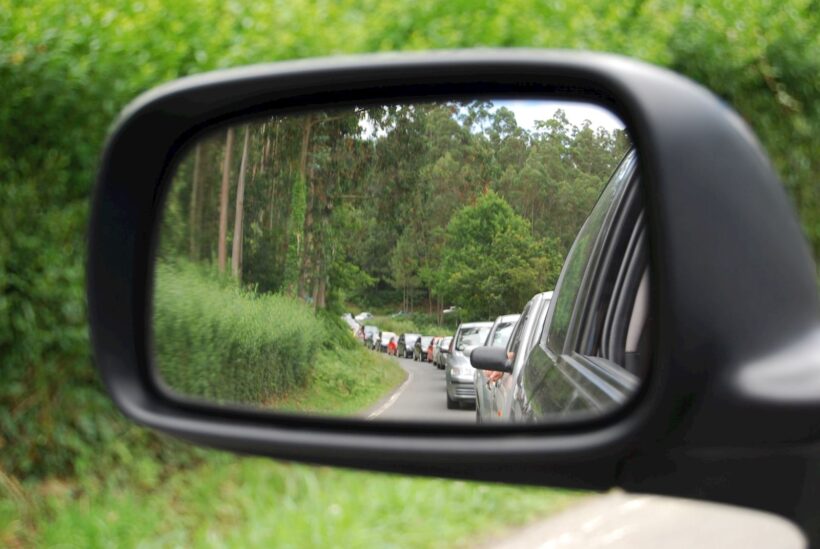
- Assess whether the damage obstructs or distorts rearward visibility.
- Have a passenger sit in the backseat to confirm the mirror still provides a clear view.
- Any obstruction of visibility in the driver’s line of sight will require replacement.
Carefully examining the type, location, severity and visibility impact of auto glass mirror damage is crucial for determining whether DIY repair is possible or if professional replacement is the best option. Proper assessment upfront can prevent unnecessary repairs or compromising safety.
DIY vs Professional Repair
Deciding whether to repair your auto glass mirror yourself or hire a professional is an important consideration. There are several key factors to weigh when making this decision:
Complexity
DIY mirror repair is doable for minor damage like small cracks or chips. But more complex issues like large cracks, missing pieces, or mirror detachment usually require professional expertise. Auto glass technicians have advanced tools and training to properly repair extensive damage.
Tools Required
Basic DIY mirror repair only requires affordable kits with resin, catalyst, spreader, polish, etc. But professionals have specialized power tools for cutting, grinding, and recalibrating mirrors. The right tools are crucial for seamless, safe installation.
Time Investment
A DIY mirror fix takes 1-2 hours including prep work, curing times, reassembly, etc. A busy vehicle owner may prefer the 45-90 minute turnaround of professional repair. But DIY gives more control over scheduling. Overall time investment is usually lower for minor repairs done yourself.
Preventing Future Damage
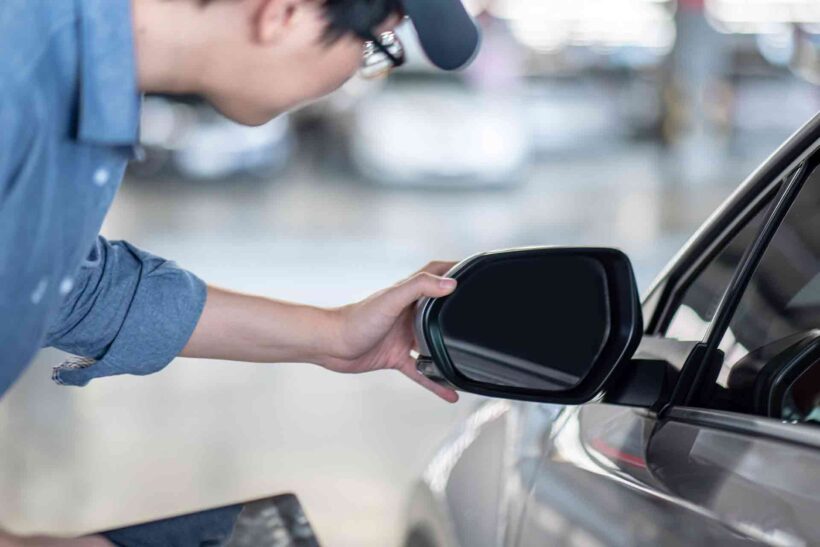
Taking steps to prevent damage to your vehicle’s mirrors can save you money and hassle down the road. Here are some tips for keeping your side view and rearview mirrors in good condition:
Proper Cleaning
- Use a soft, lint-free cloth or microfiber towel to gently wipe mirrors, avoiding abrasive materials.
- Clean mirrors using clean water or automotive window cleaner. Avoid harsh chemicals.
- Dry thoroughly after cleaning to prevent water spots.
- Take care not to bend or apply pressure to the mirror glass when cleaning.
Avoid Impacts
- Fold in side mirrors before going through narrow spaces like drive-thrus or car washes.
- Park carefully away from other cars to avoid sideswipes.
- Reinforce mirrors with protective plates if parking on streets in high-traffic areas.
Protective Covers
- Use weatherproof mirror covers when leaving car outside for extended periods.
- Install wraps or guards to protect the mirror housing from scratches.
- Consider added mirrors to increase visibility and reduce blind spots.
Taking preventative steps can significantly extend the lifetime of your vehicle’s mirrors and avoid the hassle and cost of repairs down the road. Handle mirrors with care, address any defects early, and take precautions to avoid damage.

